 |
 |
 |
| |
HIV+ Blacks in VA 30% More Likely to Have Poor Hypertension or Diabetes Control
|
| |
| |
IDSA/IDWeek 2015, October 7-11, San Diego
Mark Mascolini
Compared with whites in a 2013 Veterans Administration (VA) analysis, black veterans had not only significantly worse HIV control, but also worse control of two frequent HIV-related comorbidities--hypertension and diabetes [1]. Blacks proved about 30% more likely than whites to have poorly controlled blood pressure and diabetes--independently of socioeconomic status--despite access to the same care as whites.
Research has long linked race to better or worse response to antiretroviral therapy (ART), though all the reasons for these disparities remain unclear. Because care for HIV-positive people now extends to an array of noncommunicable comorbidities, VA researchers conducted this study to see whether racial disparities also exist in controlling these conditions.
This multicenter retrospective cohort study involved 24,088 black or white patients with HIV in care in 2013. The VA team checked medical records to determine (1) which of 19,496 veterans on antiretroviral therapy for more than 180 days had a viral load below 200 copies, (2) which of 9347 veterans with a diagnosis of hypertension had blood pressure below 140/90 mm Hg, and (3) which of 3402 veterans diagnosed with diabetes had hemoglobin A1c (HbA1c) below 9%.
Their analysis adjusted for age, race, time on ART, nadir CD4 count, retention in care (at least 2 visits 60 days apart), comorbid conditions determined by ICD-9 codes, and a US Census tract-based socioeconomic score. Logistic regression models controlled first for race only, then for race and patients characteristics, and finally for all those factors plus neighborhood socioeconomic status.
The 12,872 blacks and 11,216 whites were similar in age, percentage on ART (90.1% versus 93.1%), time in care (3183 versus 3257 days), and retention in care (66.9% versus 68.5%). Proportions of blacks and whites with diabetes were 17.9% and 15.8%, with hypertension 42.9% and 34.3%, with a substance abuse history 33.2% and 26.5%, and with depression 25.8% and 26.6%.
Significantly higher proportions of blacks than whites had a detectable viral load (13.7% versus 7.8%, P < 0.0001), uncontrolled blood pressure (33.6% versus 27.6%, P < 0.0001), and uncontrolled diabetes (14.5% versus 10.7%, P = 0.0009). Statistical analysis controlling for all factors listed above determined that black race independently raised the odds of uncontrolled HIV replication, blood pressure, and HbA1c at the following adjusted odds ratios (aOR) (and 95% confidence intervals):
-- Detectable HIV load: aOR 1.56 (1.41 to 1.73)
-- Blood pressure above 140/90 mm Hg: aOR 1.31 (1.19 to 1.44)
-- HbA1c above 9%: aOR 1.28 (1.03 to 1.60)
In other words blacks had approximately 30% higher odds of two common comorbidities than whites independently of age, socioeconomic status, and other variables.
The VA team concluded that racial disparities in clinical outcomes between blacks and whites extend beyond HIV control to include worse control of hypertension and diabetes. Differences in neighborhood socioeconomic status--the last variable added to the logistic regression analysis--only partly explained these worse responses.
Reference
1. Richardson K, Swan H, McInnes D, et al. Racial disparities extend to common comorbidities among persons in care for HIV infection. IDWeek 2015, October 7-11, San Diego. Abstract 1266.
----------------------------
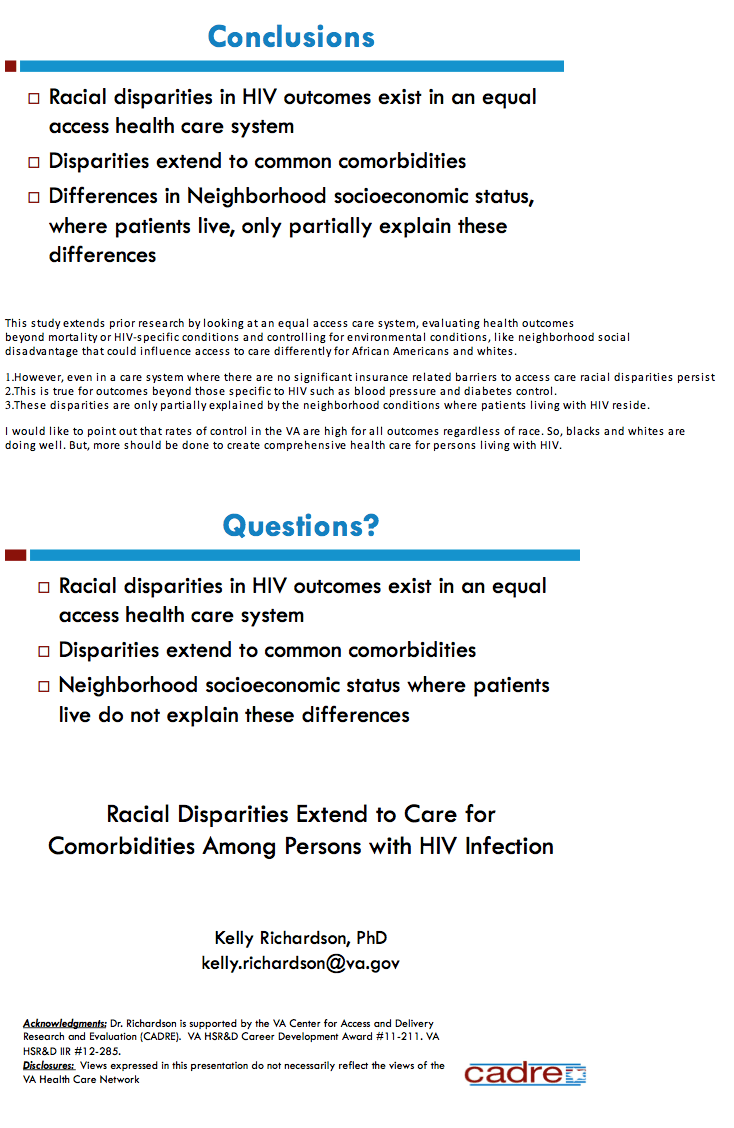
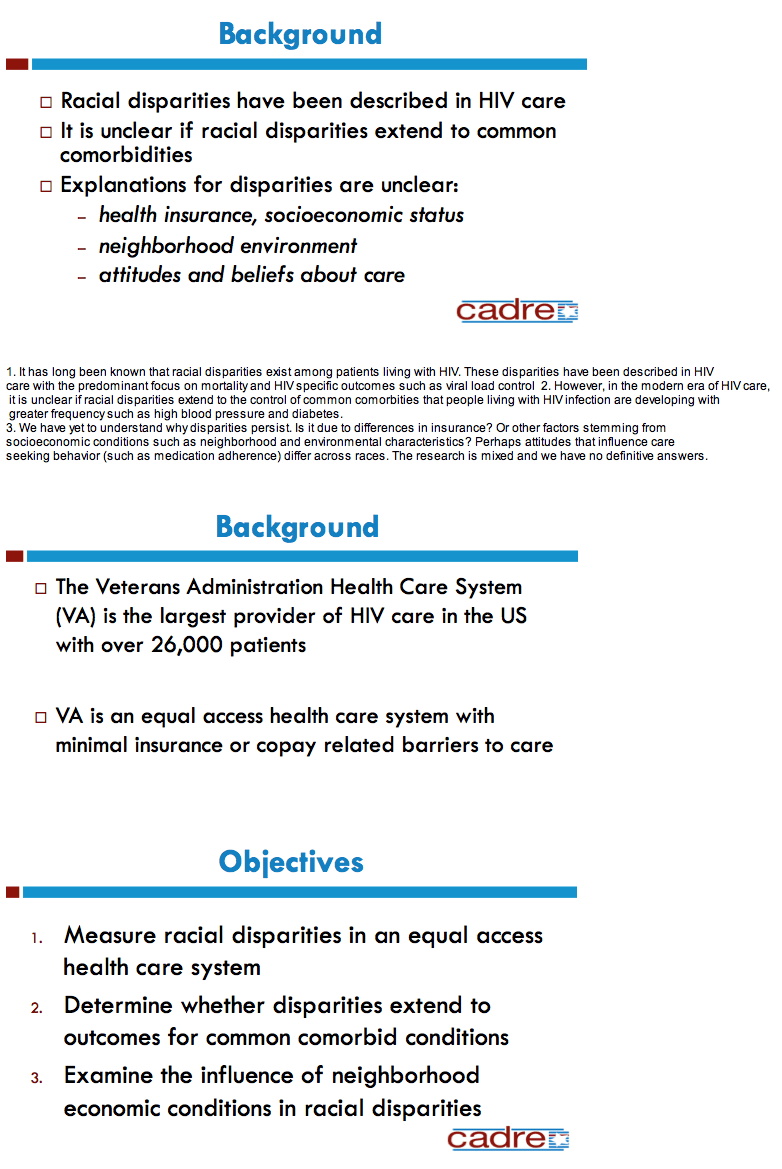
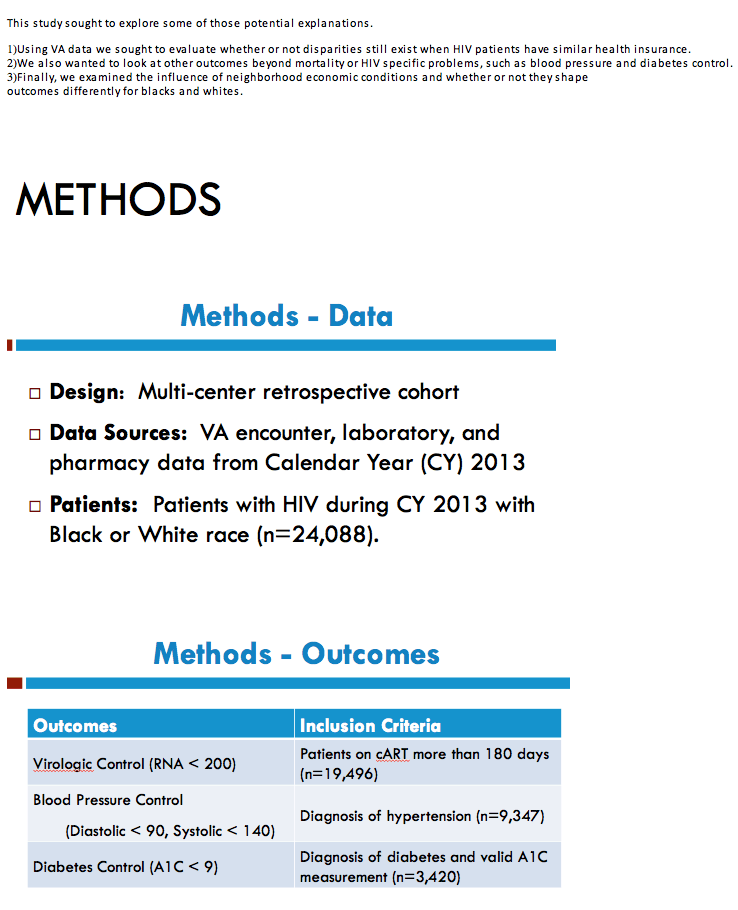
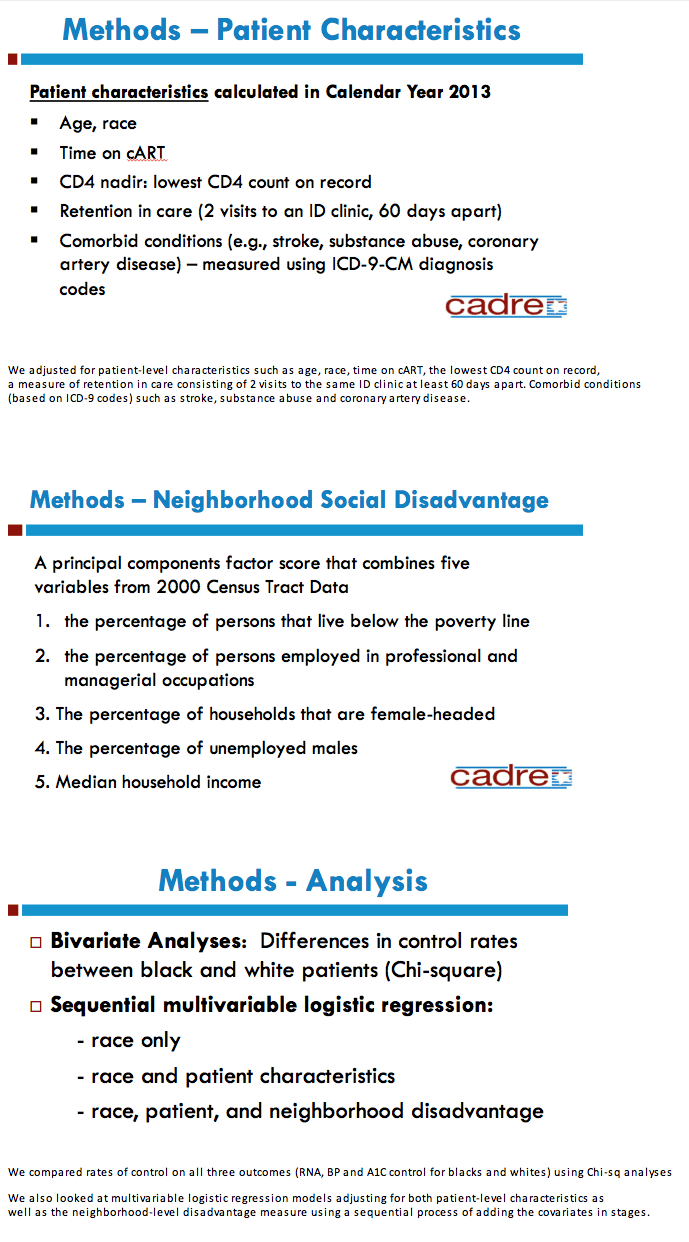
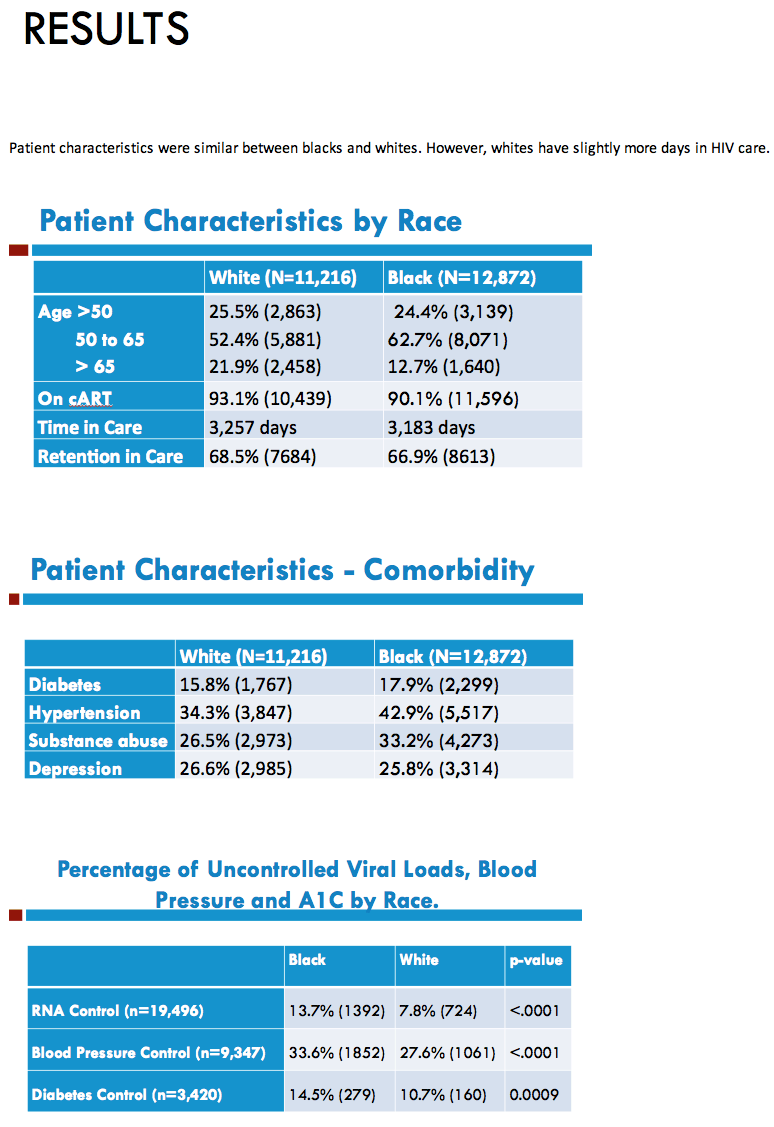
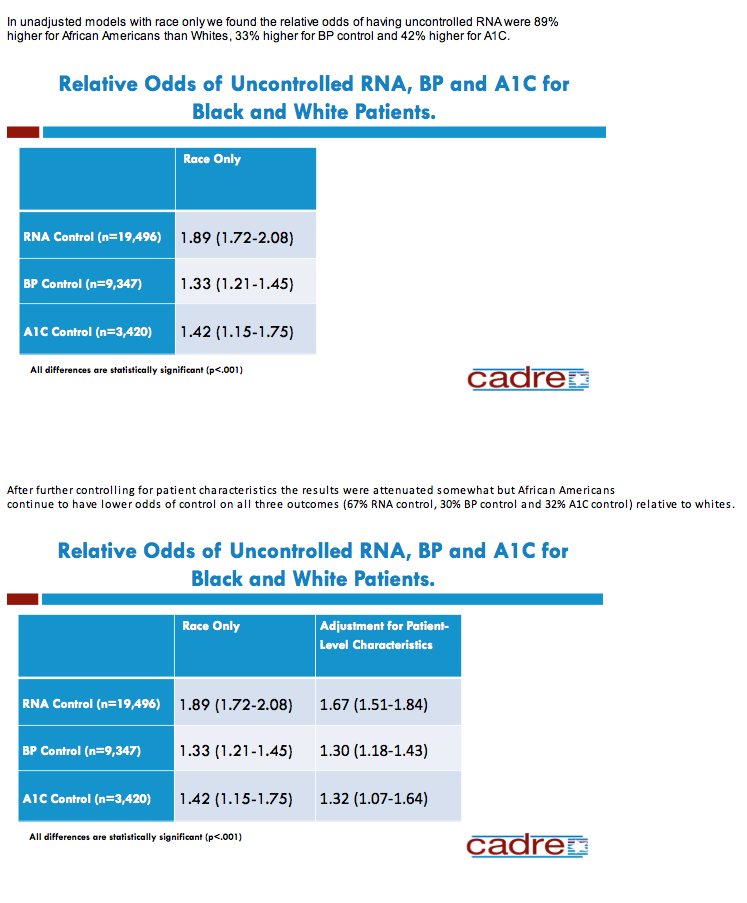
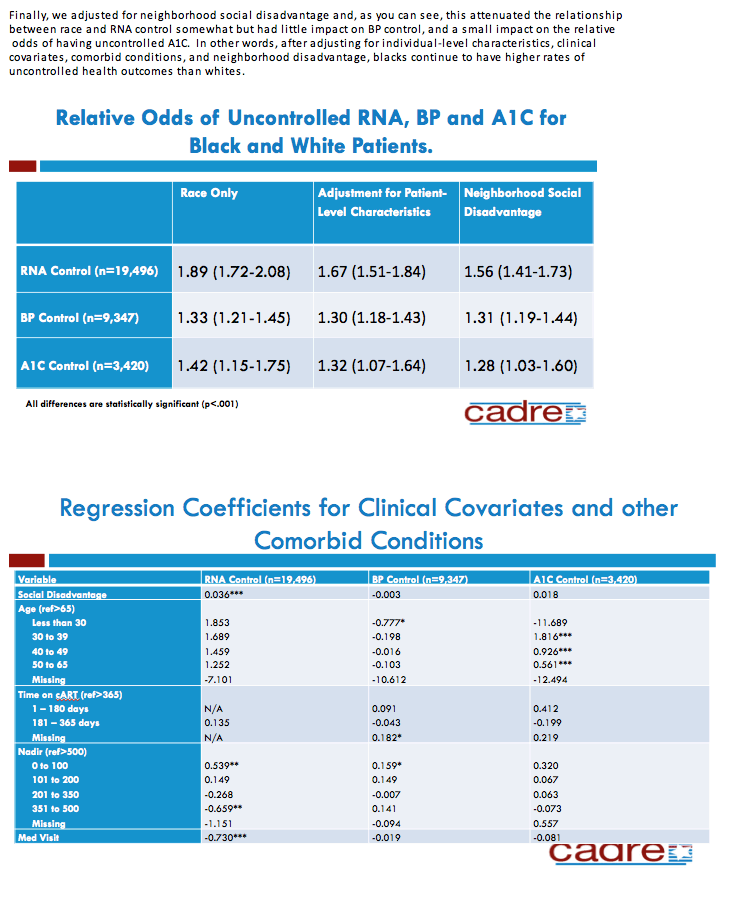
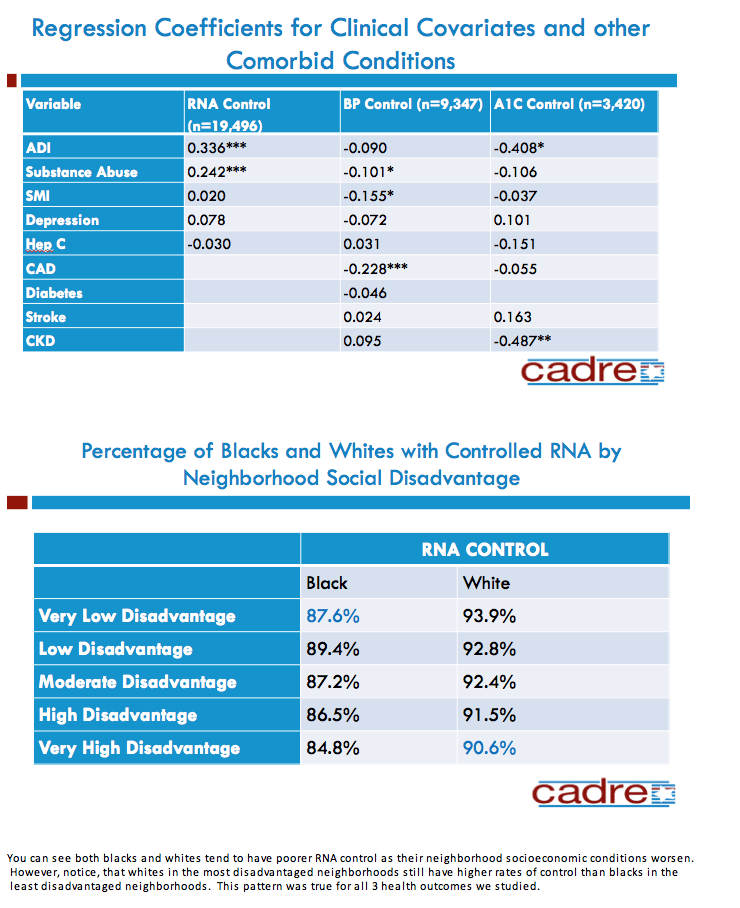
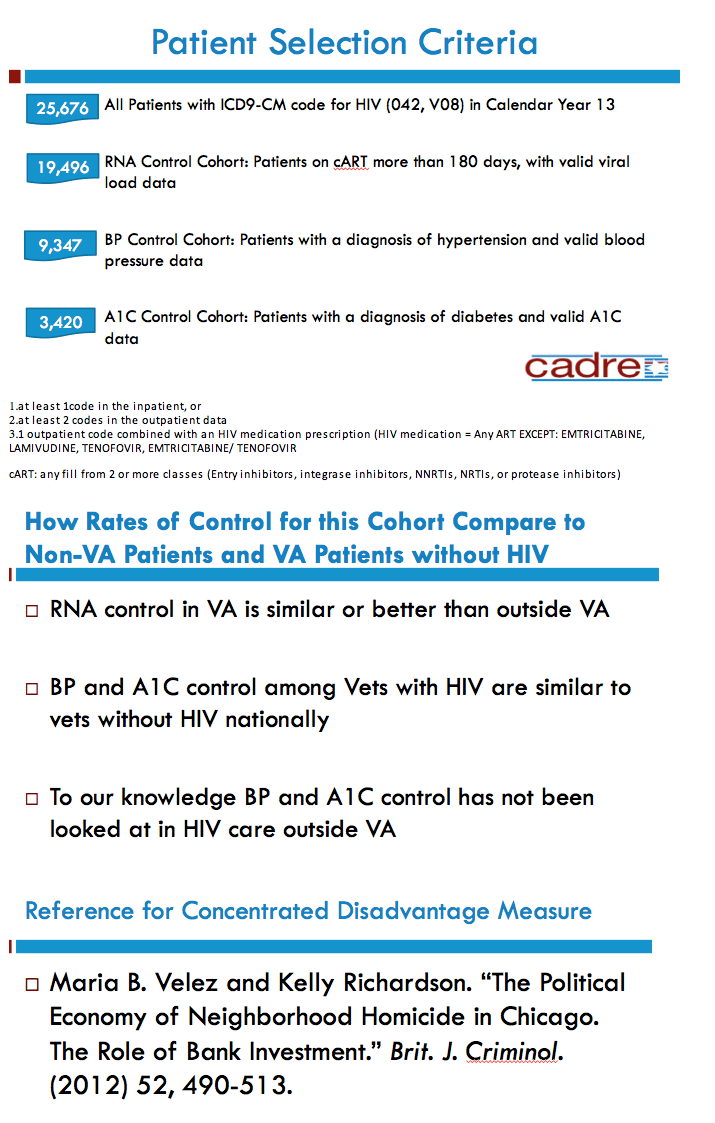
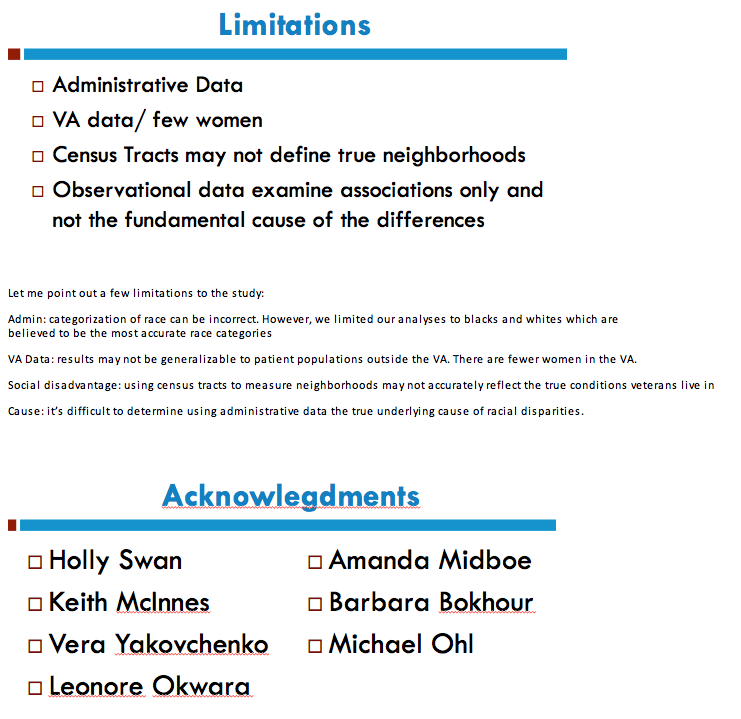
|
| |
|
 |
 |
|
|